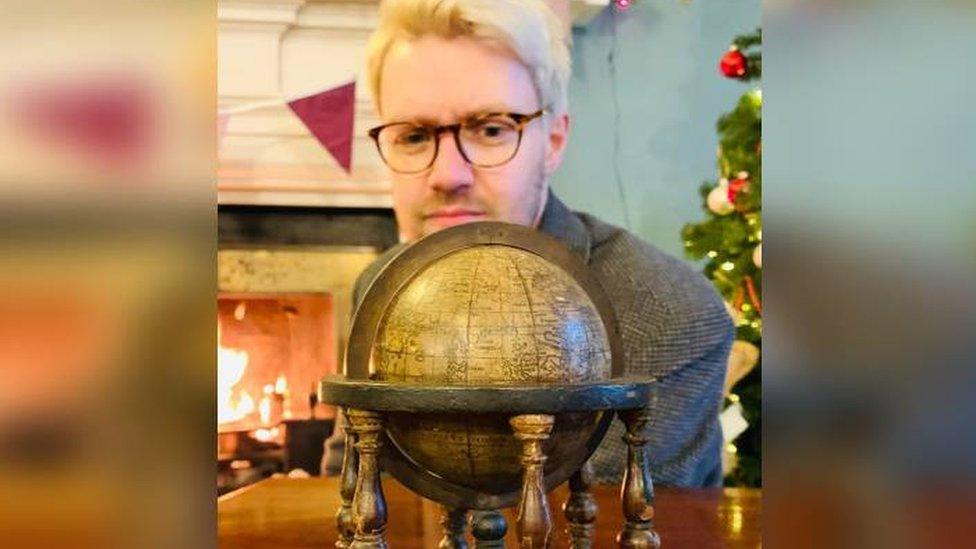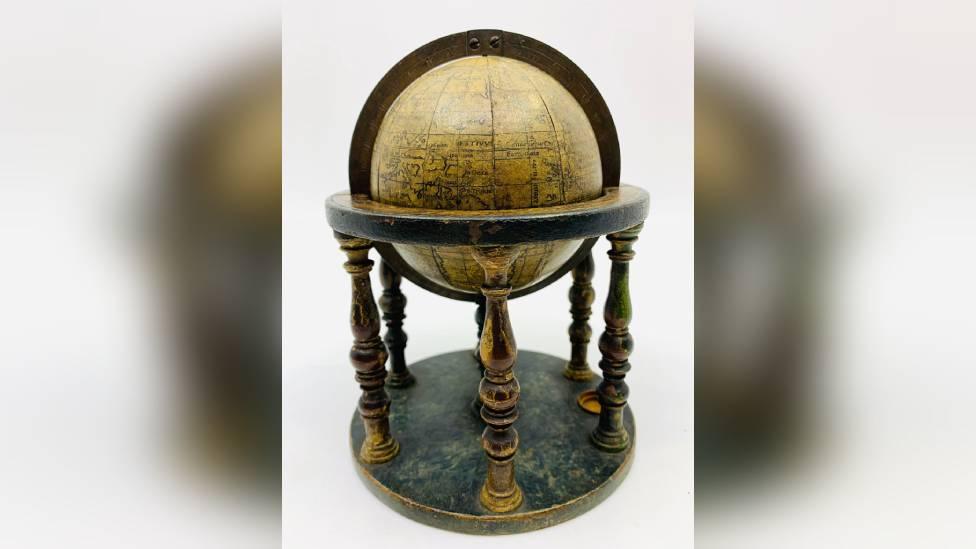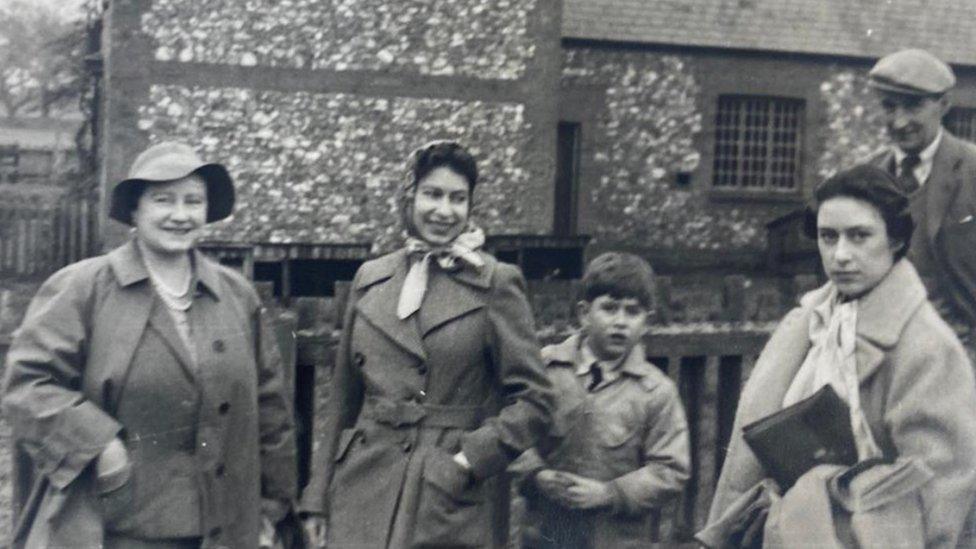Bargain 16th Century globe sold for £116,000 at auction
- Published

The carved wood and paper sphere, pictured with Jim Spencer, dates to the 1550s or 1560s
A 16th Century globe, picked up for £150 at a Welsh antiques fair, has sold for £116,000 at auction.
The carved wood and paper sphere, which dates to the 1550s or 1560s, was brought by its owner from north Wales to be valued by Hansons Auctioneers.
Australia is missing from the artefact as no European knew it existed at the time.
The hammer fell to a private buyer, who was bidding online in New York, on Thursday.
The 470-year-old globe, believed to be the oldest example of its kind offered at auction, sparked an "intense bidding battle" between five phone bidders, according to Hansons Auctioneers.
The woman who owns the globe had taken it to be valued at Hansons' saleroom in Wolseley Bridge, near Stafford, where it was given a guide price of £20,000 to £30,000.
"Such was its scarcity many museums could not advise on the 16th century terrestrial globe because they had nothing like it in their collections," the auctioneers said in a statement.
"The historical item prompted strong worldwide interest ahead of auction and it swiftly soared past its guide price of £20,000-£30,000."
The globe was originally owned by Maj Edward Croft-Murray, former keeper of prints and drawings at the British Museum.
He was one of the so-called "Monuments Men" who worked to save cultural artefacts during World War Two.
The oldest terrestrial globe in the world is the Erdapfel from 1492. The second oldest, the Ostrich Egg Globe from 1504, was sold at the London Map Fair in 2012. Then comes the Hunt-Lenox Globe, circa 1510.
'Utterly dumbstruck'

The globe is missing Australia because it had not yet been discovered by Europeans
The seller, who watched the sale live from her home in Wales, was "stunned" by the demand for the globe.
"I thought I was pushing the boat at £150 when I bought it during the pandemic," she said.
"I had no idea it was so important and valuable. I watched the auction with my friend, my husband and a glass of wine. My friend was crying, I was in shock and my husband was totally and utterly dumbstruck. It goes without saying that I'm delighted."
The globe's mapped sides, made from engraved paper, feature sea monsters while North America is dubbed "Devicta ann 1530", Latin for: "Conquered in 1530".
Jim Spencer, head of Hansons' Library Auction, said: "I'm delighted for all concerned. This is an exceptional result. This object truly deserved to excel. To me, the globe feels priceless. It's just so early and fragile to have survived the centuries.
"One specialist told me 16th-century globes are nigh on impossible to come across. In terms of value, the general consensus was that it was a 'complete unknown'. We think our globe could be the earliest ever offered at auction."
Related topics
- Published15 December 2021

- Published13 May 2021

- Published7 December 2021

- Published12 September 2021
